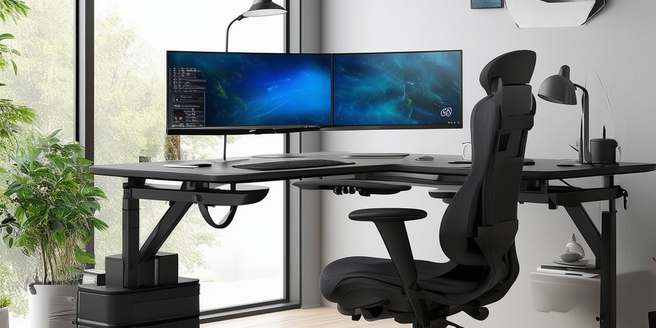
Understanding Ergonomics in the Workplace
Ergonomics is the science of designing the workplace, keeping in mind the capabilities and limitations of the worker. A well-designed ergonomic workspace can significantly reduce the risk of repetitive strain injuries and improve overall productivity. Proper lighting is another critical aspect to consider for preventing eye strain and fatigue. In addition to lighting, temperature control also plays a vital role in maintaining a comfortable work environment. It’s important to consider factors like seating posture, workstation height, and the placement of tools and equipment. Regular breaks are also essential to avoid prolonged periods of static posture. Incorporating adjustable furniture can provide employees with greater flexibility and comfort. By understanding ergonomics, employers can create safer and more comfortable work environments, ultimately enhancing employee well-being and efficiency.
Top Ergonomic Chairs for Enhanced Comfort
Ergonomic chairs are essential for promoting better posture and reducing discomfort during long hours of work. These chairs are designed to support the natural curve of the spine, provide adequate lumbar support, and allow for adjustments in height and armrests. Additionally, many ergonomic chairs are equipped with features that cater to specific needs such as neck and head support. Proper adjustments and settings can further enhance their benefits. By using ergonomic chairs, individuals can significantly reduce the risk of developing musculoskeletal problems. Some popular options include chairs with mesh backs for breathability, padded seats for extra comfort, and the ability to swivel for ease of movement. Investing in a high-quality ergonomic chair can make a significant difference in workplace comfort and productivity.
Standing Desks: Are They Worth It?
Standing desks have gained popularity as an alternative to traditional seated workstations. They offer the flexibility to switch between sitting and standing positions, which can help reduce the risks associated with prolonged sitting, such as back pain and poor circulation. Research suggests that using a standing desk can improve posture, increase energy levels, and boost productivity. Additionally, standing desks can promote better blood flow compared to sitting all day. Many users report feeling more alert and focused when using a standing desk. Consequently, these desks have become a staple in modern offices. However, it’s essential to balance standing with sitting and to use an anti-fatigue mat for enhanced comfort. Overall, standing desks can be a valuable addition to an ergonomic workspace.
Essential Keyboard and Mouse Ergonomic Accessories
Ergonomic accessories like keyboards and mice are crucial for minimizing strain on the hands and wrists. An ergonomic keyboard typically splits the keys into two halves, allowing for a more natural hand position. It may also feature a cushioned palm rest to reduce wrist strain. Additionally, adjustable-angle features can further improve comfort and alignment. Proper ergonomic equipment can make a significant difference in daily comfort and long-term health. Ergonomic mice are designed to fit comfortably in the hand, reducing the risk of repetitive strain injuries. Using ergonomic accessories can also increase work efficiency. Some options include vertical mice, trackballs, and wireless models to reduce cord clutter. These accessories can greatly enhance the ergonomic setup of any workstation.
Lighting Solutions: Reducing Eye Strain and Fatigue
Proper lighting is essential in reducing eye strain and fatigue in the workplace. Natural light is the best source, but when it’s not available, consider using LED desk lamps with adjustable brightness settings. It’s also important to choose lighting that mimics natural light as closely as possible. Additionally, ensuring that your overall office lighting setup is consistent can greatly improve comfort. Positioning the light source to avoid glare on computer screens can also help. Task lighting that focuses directly on the work area can reduce the need to strain eyes. Using computer glasses with anti-glare coating can further enhance visual comfort. Effective lighting solutions are a key component of an ergonomic office environment.
